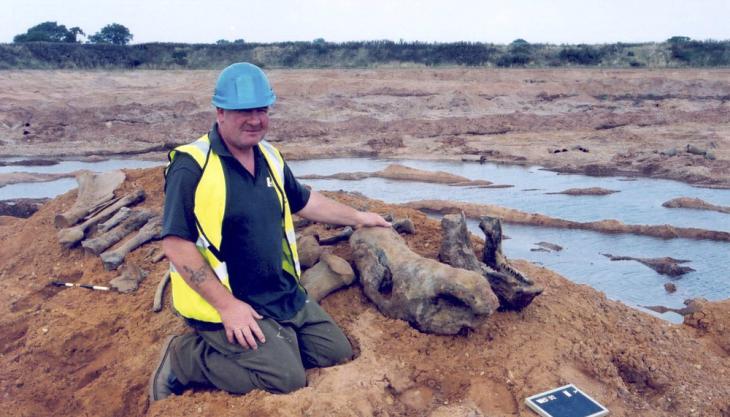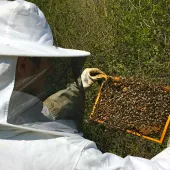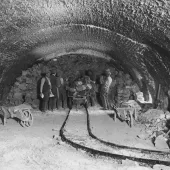Woolly rhino reveals clues to Ice Age environment

Discovery at Lafarge Tarmac sand and gravel quarry sheds new light on UK’s climate history
A WOOLLY rhinoceros skeleton unearthed at a Lafarge Tarmac quarry is giving scientists new insight into ancient British weather.
When it was discovered at the Whitemoor Hay sand and gravel quarry, near Alrewas, Staffordshire, in 2002, the remains were billed as ‘the most significant fossil find of a large mammal in Britain for over 100 years’.
Now, following years of research, the exceptionally well-preserved bones are offering up the secrets of the climate in Britain 42,000 years ago.
A team of scientists from the UK and the Netherlands, led by Professor Danielle Schreve from Royal Holloway, University of London, analysed the skeleton alongside the remains of other animals, such as mammoths and reindeer and well-preserved insects, to create a picture of Britain’s Ice Age environment.
They found that summer temperatures in Britain would have averaged just 10°C and dropped to –22°C in winter.
Ross Halley, head of mineral resources for Lafarge Tarmac, said: ‘It is quite astounding to think that bones found at one of our sites have been so critical to understanding how our ancient weather worked. When we unearthed the skeleton in 2002, we knew we had come across something special, and now we are beginning to see just how important this find is.’
Other history-changing finds at Lafarge Tarmac sites have included a road unearthed at Bayston Hill Quarry, which challenged the assumption that Romans invented roads, and evidence of habitation in the North East, which refuted the view that local tribes were nomadic.
The woolly rhino was found by quarry worker Ray Davies (pictured) who pulled up the skull of the animal in his excavator bucket. Archaeologists from the University of Birmingham were called in immediately to supervise the recovery of the full skeleton which remained largely intact.
Given the exceptional value of the archaeological find, quarrying was immediately moved to a different part of the site and the bones were passed to the Natural History Museum in London, where they have been studied for more than a decade.









